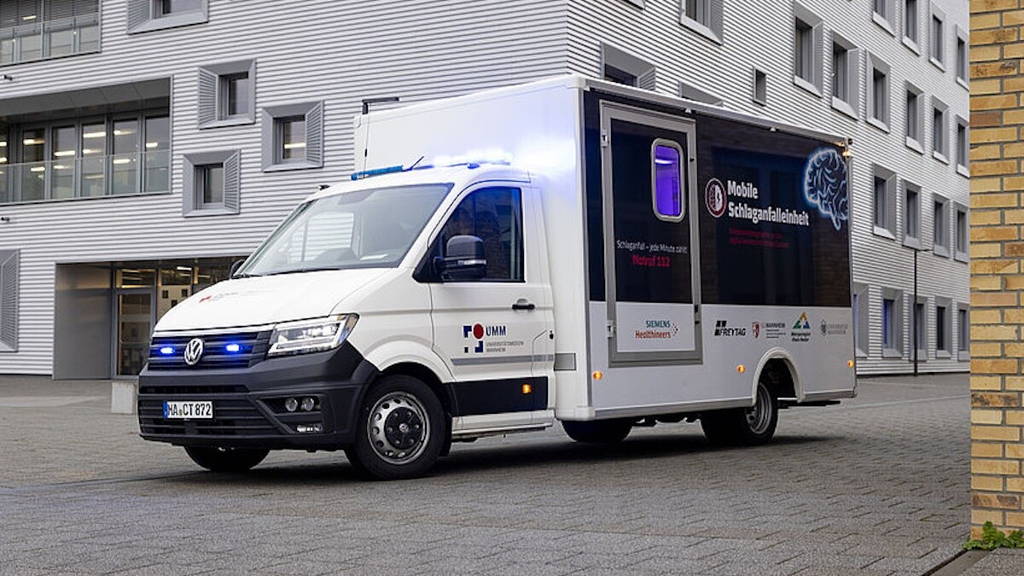Researchers at Erasmus MC have developed a simulation model to determine whether stroke patient care would benefit from the introduction of a mobile stroke unit (MSU). Based on the simulation model, they have now concluded that the use of an MSU would enable patients with a suspected stroke in the Rotterdam region to be treated more quickly and effectively than is currently the case.
Speed is of the essence in the case of a stroke. The acute disruption of the blood supply to the brain causes nerve cells to die very quickly. Early treatment can prevent serious disability or death. However, current practice requires imaging in the hospital first, which often leads to costly delays. ‘Making a diagnosis requires a CT scan, because you cannot tell from the outside whether it is a blood clot or a brain haemorrhage. That necessary imaging only takes place in the hospital, while every minute counts,’ says PhD student Peter van Hulst, whose research has been published in Neurology.
Ambulance with CT scanner
The mobile stroke unit offers a solution. This ambulance is equipped with a CT scanner, specialist equipment and a specially trained nurse. When 112 receives a report of a suspected stroke, both a regular ambulance and the MSU are dispatched. The specialised nurse performs the initial assessment, makes the diagnosis together with a remote neurologist and can immediately start medication. The patient is then transported to the most suitable hospital, while the MSU is available again for the next call.
According to Erasmus MC, the MSU is not only faster but also cost-effective. In the most favourable scenario, where the unit is available daily between 7:00 and 23:00, with a response time of up to 25 minutes, treatments can be started 10 to 50 minutes earlier. This saves lives and prevents disability. In addition, hospitals save on long-term care costs. The MSU also replaces more than 180 ambulance transfers and reduces the pressure on the emergency department.
Regional pilot
The researchers now want to set up a pilot in the region to test the simulation model in practice. The investment is substantial: approximately 1.5 million euros for the purchase of an MSU, plus operational costs. Nevertheless, it is expected to pay for itself within two years.
The mobile stroke unit is already in use internationally, including in Berlin, Melbourne and various cities in the US and China. Its introduction in the Netherlands could be an important step towards faster, more efficient and patient-centred stroke care. Van Hulst concludes: ‘The health benefits and long-term savings make this innovation absolutely worthwhile.’
Improving and accelerating stroke care
Various initiatives are being developed both within and outside the Netherlands to improve and accelerate stroke care. Earlier this year, for example, we reported on a partnership between thirteen Dutch hospitals to reduce the so-called “door-to-thigh time” from an average of 52 to 47 minutes. Thanks to advanced CT diagnostics and intensive collaboration between neurology, radiology and emergency care, thrombectomy can be performed more quickly. This network uses shared quality data (via dashboards) to identify bottlenecks and implement improvements.
Philips and Medtronic have also been working together globally in the field of stroke care for some time. Together, they have expressed their ambition to improve access to timely diagnosis and treatment of strokes worldwide. They also collaborate with the WSO (World Stroke Organisation) and joined the WSO Advocacy Coalition last year. Led by the WSO, this coalition brings together a wide range of parties, including healthcare professionals, patient groups and policymakers, to develop strategies to address the global impact of strokes.









